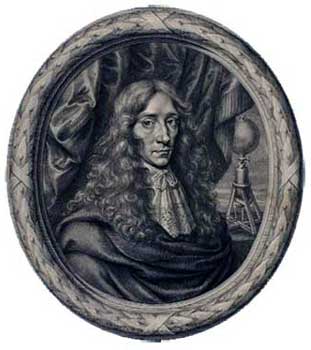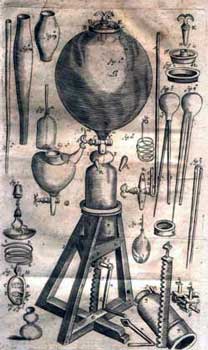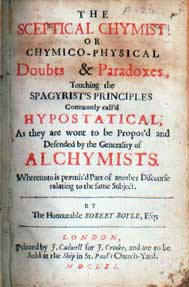Robert Cutillo
Denver, Colorado, United States
The probable is what usually happens – Aristotle

The field of medicine has become a focal point for a conundrum of our late modern culture. Somewhere in the history of the relation between sickness and science we have come to expect a highly predictable fix, much better than what “usually happens” when we come to the doctor with what ails us. With so much of life secure, it is when we are sick or consider ourselves at risk of becoming sick that we often face our deepest sense of insecurity about the future. We carry these fears with us as we enter our modern-day hospitals and clinics, believing that our best hope for re-establishing the predictability of life and the control of the future will be found within these walls.
The problem with the expectations of our current age is that despite large domains of medical success our capabilities and capacities fall short of a demand for a certain future. Into this gap our desire to perform to expectation produces scientifically useless or marginal care that contributes to expanding and unsustainable health care budgets, false promises with subsequent disappointment and anger that multiply our malpractice problems, and a failure to face with courage and hope the tragedies of life that must come as part and parcel of our profession.
As a society we have embraced this unrealistic understanding of life for a variety of reasons. One that is foundational to both those who practice medicine and those who seek its help is our faith in science. The science we speak of is not simply knowledge as a general term but certain knowledge, the kind of knowledge that we can use to change the unacceptable present into a predictable future. This view places scientific knowledge above all other forms of knowing, because it is based on a belief in a scientific method that is proven, reproducible, and completely unbiased, leading to truths both universal and particular. The problem with this view of science is that it is neither accurate, as this historical reflection attempts to show, nor conformable to present observable reality, which we must admit if we are willing to see it.
Uncertainty in outcome is more readily accepted when we consider medicine as art, the practice of a profession that cares for real people in particular circumstances. Though even here we easily forget the “necessary fallibility” of living organisms in real time, we generally use this formulation of medicine to explain the unintended consequences of our interventions. It is to the other face of our profession, medicine as science, that we usually turn to stake our claim for reliability and reproducibility in the organization and outcomes of our health care. But it is this very piece, the scientia of medicine, that we wish to examine, by turning back to its beginnings, to underscore the uncertainty that resides here in our most certain space, in our fundamental notions of the acquisition and development of knowledge inherent in the scientific method.

It is generally accepted that the current practice of science in medicine is built upon the revisions in understanding brought about by the many discoveries that flowed out of the Enlightenment Period of the seventeenth and eighteenth centuries in Europe and America. Within this more general change in thinking about the world was the Age of the Scientific Revolution, when the likes of Galileo and Newton reconstituted our view of the world and how knowledge is secured.
A man in the center of this time of change was Robert Boyle, an aristocratic Englishman, who rejected the traditions of inherited authority and sought knowledge based on empiric observation and experimentation. He is best known for his work with the properties of a vacuum, and the resultant law of his same name, that the volume and pressure of gas are inversely related by a constant, measurable correlation. His “corpuscular” theory, that matter is made up of discrete units, and his understanding of the relation of these parts to higher levels of structure, laid the foundation for our current understanding of the chemical elements and the structure of compounds.
As he uniquely phrased it within the language of his time:
For we must consider each body, not barely as it is in itself, an entire and distinct portion of matter, but as it is a part of the universe, and consequently placed among a great number and variety of other bodies, upon which it may act and by which it may be acted on in many ways.1
While his scientific work is worthy of full study, it is his philosophy of nature, enlightened by his research, that most animates the current discussion. From his experiments with suction pumps he refuted the Aristotelian conception of a horror vacui, that nature “abhorred a vacuum”. This language portrayed nature as having a soul, implying that in and of itself it had purpose and pursued ends as a fulfillment of natural motion. This explanation, Boyle said,
supposes that there is a kind of anima mundi, furnished with various passions, which watchfully provides for the safety of the universe; or that a brute and inanimate creature, as water, not only has a power to move its heavy body upwards, contrary (to speak in their language) to the tendency of its particular nature, but knows both that unless it succeed the attracted air, there will be a vacuum; and that this water is withal so generous, as by ascending, to act contrary to its particular inclination for the general good of the universe, like a noble patriot, that sacrifices his private interests to the public ones of his country.2
As Thomas Hobbes would describe this “animistic” view to explain why heavy objects sink:
But if you ask what they mean by heaviness, they will define it to be an endeavor to go to the center of the earth: so that the cause why things sink downward is an endeavor to be below; which is as much as to say that bodies descend, or ascend, because they do. Or they will tell you the center of the earth is the place of rest and conservation for heavy things, and therefore they endeavor to be there: as if stones and metals had a desire, or could discern the place they would be at, as man does.3
From this deconstruction of a previously held “vulgar” view of nature, Boyle developed a conception of how laws of nature are discovered (his method) and to what extent they may be relied upon (his application) in the normal course of events. To understand relations applicable to matter, observation and experimental method must be used, since regularity, and subsequent laws describing that regularity, is external to nature and imposed on it, not inherent to it as if matter had “intent” of its own. In fact, the laws that we formulate are categories that the human mind imposes on nature in the light of observed regularities of experience. They are our best description of what has up to this point been observed. But these laws must be seen as a work in progress, with the humble acceptance of error as an often necessary part of the scientific process:
it is sometimes conducive to the discovery of truth, to permit the understanding to make an hypothesis … [so] that by the examination how far the phenomena are, or are not, capable of being solved by that hypothesis, the understanding may, even by its own errors, be instructed. For it has been truly observed by a great philosopher, that truth does more easily emerge out of error than confusion.4
Boyle’s “great philosopher” alluded to is none other than Francis Bacon, founder of the modern scientific method, to whom Boyle was indebted for several of the ingredients of his natural philosophy.
There was in fact wide agreement amongst seventeenth century modern natural philosophers, Boyle included, that mathematics was the most certain and therefore highly valued form of knowledge. Where opinion diverged was how far nature would obey mathematically formulated and therefore binding laws. Boyle, along with the Royal Society of London of which he was an influential member, doubted that numerical representations could capture the contingencies and complexities of many if not most natural processes. He saw these mathematical accounts working very well in the abstract but less well when applied to concrete and particular realities. Since so much of the natural world did not conform to pure mathematics, knowledge must be sought through observation and rigorous experimentation. What cannot be directly observed can only be understood with the utmost diffidence and reserve.

by Robert Boyle
(London: printed by J. Caldwell for J. Crooke. 1661)
In Boyle’s methodology, the laws that we formulate from the particular observations that we make must be held with a certain skeptical attitude. This “problem of induction” was not new to the 17th century investigator, but was known centuries before:
For, when they propose to establish the universal from the particulars by means of induction, they will effect this by a review of all or some of the particular instances. But if they review some, the induction will be insecure, since some of the particulars omitted in the induction may contravene the universal; while if they are to review all, they will be getting at the impossible, since the particulars are infinite and indefinite.5
Boyle’s acceptance of this cautious attitude regarding the compliance of nature to law was an intrinsic piece of his experimental philosophy.
It is of note that Boyle, while being one of the most influential advocates of the mechanical philosophy that revolutionized the understanding of nature in this time period, was at the same time able to accept the limits of a mechanistic theory applied to the natural world. The “clock-like” attributes of nature that allowed many of its workings to be described in terms of laws did not directly and predictably lead to understanding of cause. The pursuit of cause was the golden goose of this new science, as it would permit the greatest predictability and control. Boyle was firm in his requirement that conclusions be based on reliable evidence. Effects may be seen, but cause is often hidden, and what is hidden can only be inferred with, at best, a high level of probability.
These incomplete connections between cause and effect led Boyle to accept a “characteristically and for the most part” application of “law” to nature, being hesitant to assume that moving from the general law to the particular circumstance would consistently and infallibly predict the effect and outcome in each and every application. This cautiousness put him at odds with the likes of Descartes, who much preferred the power of a universal application of a priori understandings to individual circumstances which would cooperate unfailingly, with attendant powers of prediction that would modify the world for the better inexorably and reliably.
The giants of this age debated and differed about the power and potential of science. Issac Newton, whose achievements are seen by many as the perfection of the mechanical philosophy of nature and the culmination of the Scientific Revolution, is a study within himself of the push and pull of how science should be viewed. He saw his early study of gravitational force and his work with optics as mathematically based and thus universally applicable, certain beyond doubt. Yet in later years his initial reluctance to specify a mechanical cause for gravitation, which made many in the community committed to a mechanical philosophy of nature unhappy, led to a more developed contentment with using what the senses and intellect could discern while accepting what was left hidden as part of the ultimate inscrutability of nature. Steven Shapin, in his critical synthesis of the Scientific Revolution, comments on this development in Newton:
It was not philosophical, but its opposite, to “feign” (or imaginatively concoct) hypotheses, even and especially mechanically causal hypotheses, when the senses and intellect could not securely discover them. “In bodies,” Newton wrote, “we see only their figures and their colors, we hear only their sounds, we touch only their outward surfaces, we smell only the smells, and taste the savors; but their inward substances are not to be known either by our senses, or any reflex act of our minds.6
The difference in conceptions of science in Robert Boyle’s century persists into our own time. We continue to have mathematically-oriented experimentation and statistical manipulation claiming high levels of certainty juxtaposed with investigators of concrete particulars who maintain a modesty and hesitancy to produce widely applicable formulations of cause and effect. It is left to our current age and our ongoing practice to respond to the critical question of when and where which form of science applies to medical practice. The increasing pressure for certainty will not by itself, except by some magical use of smoke and mirrors, expand the space (Boyle’s volume) where certainty appears to reside. Though it will always be difficult to determine exactly where the shoreline lies, we must learn to hold securely to the solid rock of certainty when science permits it, while simultaneously acknowledging the seas of mystery that lap it on all sides. We may explain that mystery with God, or chance, or seek some other way to live with hope. But we jeopardize the legacy of our profession if we fill the void with false promises based on claims of science that are soft, suspect, and slippery. More likely causing harm than benefit to those who try to stand there, we will find ourselves in a much unintended place, with both the science of medicine unscientific and the art of medicine unhelpful to a society to whom we owe the best evidence-based care we can offer.
Notes
- Thomas Birch, ed., The Works of the Honorable Robert Boyle, vol. 2. (London: A. Millar, 1744), 464.
- Ibid., 36.
- Thomas Hobbes, “Of Darknesse from Vain Philosophy and Fabulous Traditions”, in Leviathan (1651), accessed December 26, 2012, http://www.gutenberg.org/files/3207/3207-h/3207-h.htm#2HCH0046.
- Thomas Birch, ed., The Works of the Honorable Robert Boyle, vol. 1. (London: A. Millar, 1744), 194.
- Sextus Empiricus, Outlines of Pyyyhonism, 2nd Century, trans. R.G. Bury (London and New York, 1933-6). Book II, Chapter XV.
- Steven Shapin, The Scientific Revolution (Chicago: University of Chicago Press, 1996), 157.
ROBERT CUTILLO, MD teaches health and justice at Denver Seminary. He is also the Clinical Professor at the University of Colorado Denver School of Medicine in Aurora. He has worked for over 25 years in faith-based health care for the uninsured and underserved, previously in Chicago, IL and Washington, DC, and now in Denver for the last 14 years. He also spent several years in Kinshasa, Democratic Republic of Congo (formerly Zaire) establishing an urban primary health care program. His current interest is in the connection between unrealistic goals in medicine and injustice in distribution of limited health care resources.
Highlighted in Frontispiece Spring 2014 – Volume 6, Issue 2

Leave a Reply